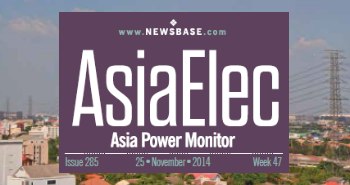bneGreen: Vietnam leads in SE Asia's boom into renewable energy investment

Vietnam has taken the lead as investment into renewable energy gathers momentum in SE Asia as governments across the board introduce supportive regulation and attractive tariff policies that have attracted investment.
Vietnam already boasts the most renewable generating capacity at over 45 GW, and has reaffirmed its commitment to decarbonisation by approving a new power masterplan. The power market is dominated by the state-owned EVN (Vietnam Electricity), which has over the last two years developed a plan to bolster wind and gas energy while reducing its reliance on coal.
Malaysia, in June 2023, announced plans to lift its ban on renewable energy exports to stimulate investments. The country is also gearing up to release an energy transition roadmap aimed at achieving its net-zero targets.
The Philippines, having recently opened up its renewable energy sector to foreign ownership, is holding its second green energy auction to diversify its energy mix, which is currently dominated by coal.
Energy professionals say that 2023, will be a key year as many new initiatives come to market with more investment in Vietnam, Thailand and Malaysia as well as new generating auctions in the Philippines. Singapore's Energy Market Authority is also experimenting with cross border power solutions in partnership with Indonesia, Borneo, Cambodia and Laos, The Business Times Singapore reports.
Throughout the region, positive developments are driven by supportive regulations and tariff policies as governments in the region embrace the ideas of reducing emissions and becoming carbon neutral in the years ahead.
Vietnam's strong government incentives, including feed-in tariffs for solar and wind, have led to a "staggering roll out" of renewable energy in the last five years, according to The Business Times Singapore, driven in part by rising demand for power. A bottleneck has emerged as the country's installed capacity is outpacing the growth in grid capacity highlighting the need for more investment into the infrastructure.
Indonesia, the most populous country in the region and the fourth-biggest emitter of GHGs, plays a key role in the decarbonisation of SE Asia. Despite its abundant renewable energy potential, the country suffers from a congested grid and is still heavily reliant on coal. However, observers hope that more investments will be unlocked in the renewables space as a result of the Just Energy Transition Partnership scheme announced in 2022, to help fund its energy transition.
Singapore's liberalised power market is poised to catalyse regional renewable developments. The city-state is pursuing cross-border cooperation, aiming to import 4 GW of low-carbon energy by 2035, through agreements with neighbouring countries.
Thailand, grappling with energy security concerns due to gas supply challenges and its dependence on piped gas from Myanmar, which is falling, has turned to biomass, waste-to-energy, and solar to bolster its energy mix. The Electricity Generating Authority of Thailand is driving the country's clean-energy agenda and investing into large-scale floating solar projects at hydropower dams as part of Thailand's clean-energy agenda.
Singapore has the most liberalised power market in the region and considerable financial resources so analysts hope it will act as a catalyst for the region's renewable development. Singapore is actively pursuing regional cooperation and has inked deals with Laos, Indonesia and Cambodia as part of a plan to import 4 GW of low-carbon energy by 2035.


Follow us online